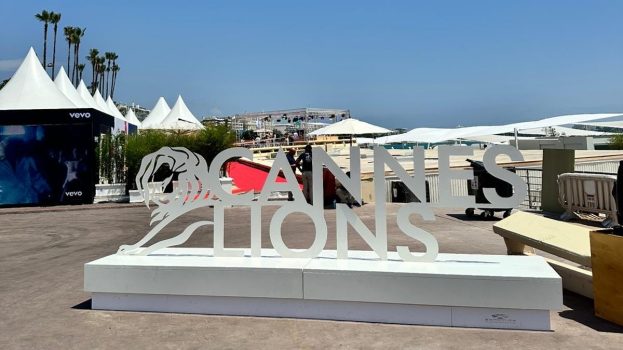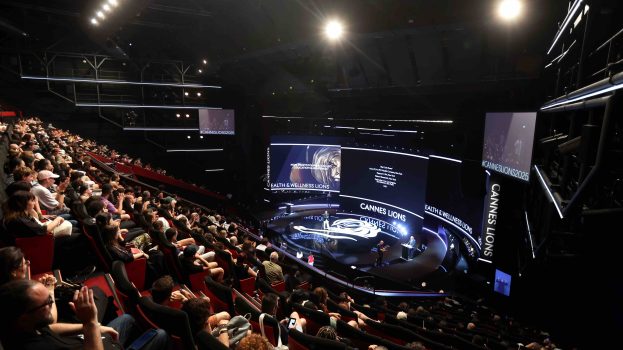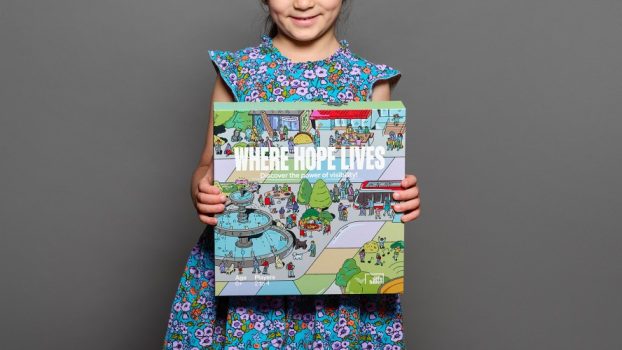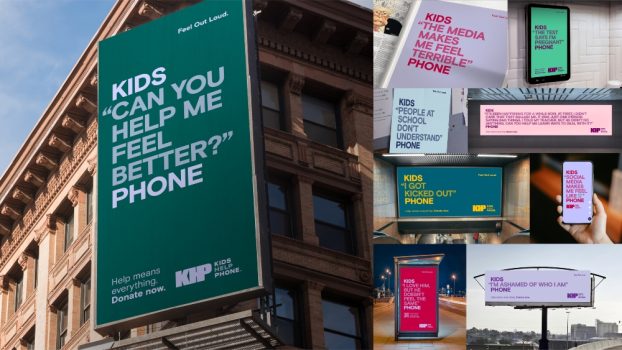After two years in the top spot, DDB is giving the competition a chance to catch up, taking home Silver in this year’s Agency of the Year competition.
“2011 was a year where we couldn’t pitch many conflict accounts in the automotive, financial services and beverage alcohol segments – the big pitches of 2011. Though we did incredibly well on the digital side with digital AOR wins for big clients like McDonald’s, Canadian Tire and Lipton,” says David Leonard, president and COO at DDB Canada. “That part of the business is on fire.”
For Leonard, the agency’s strongest campaigns this year were the ones that embraced innovation and defied category conventions – like its “Keep Exploring” work for Canadian Tourism Commission (CTC), which took Gold for Transmedia at strategy’s inaugural AToMiC Awards this fall. The digitally savvy campaign eschewed professional footage of scenic vistas in favour of videos and photos shot by tourists, and used Google Maps Street View to put travellers onto Canadian streets.
DDB also demonstrated a knack for using older tech in new ways, giving the old-school flipbook a modern twist with its animated “Pure Performance” for Subaru’s WRX STI.
“When you’re working with a relatively niche brand, you’ve got to take some calculated risks to get ahead,” Leonard says, noting that Subaru has “continued to take control of their own destiny” by creating fresh local work instead of relying on U.S. creative.
“I wish there were more brave, innovative clients out there that have control of their own activity and don’t have to report to someone in some other hub,” he says. “We all need more clients like this.”
And DDB is laying the groundwork for new growth with Shopper DDB, a shopper marketing division launched this summer, helmed by Spider Marketing’s former
VP of consumer and shopper strategy, Jason Dubroy.
“Shopper marketing has really started to take off [in Canada],” Leonard says. “We’re still about three years behind what’s going on in the U.S., in terms of sophistication and client budget commitment. But if you think about what online felt like 10 years ago, this is what shopper marketing is starting to feel like in this country.”
Scooping up Dubroy as VP of shopper marketing allowed the agency to dive into this emerging field with confidence, Leonard says. But finding and retaining the right talent isn’t easy – in fact, Leonard considers it one of the biggest industry challenges moving forward into 2012.
“The best thought leaders in any of the disciplines are in very high demand and they’re mobile,” he says. “I keep saying to my folks, ‘Don’t hire anyone from a
Bloor Street agency, from a King Street agency. Why would we hire from average shops in our own backyard? We’ve got to hire from offshore [and] different disciplines, we’ve got to look at people who’ve worked clientside. Injecting that fresh thinking and perspective is the only way to stay in front.’”
If Leonard’s got hiring on the brain, it’s for good reason: “You’ll hear very soon about an additional office for DDB in Canada – more on that in the new year.”
The facts:
Offices: Vancouver, Edmonton, Toronto, Montreal
Staff: 252
New hires: Nik Badminton, director of digital strategy, Tribal DDB Vancouver; Michelle Kitchen, VP business director, DDB Vancouver; Natalie Godfrey, senior planning director, DDB Vancouver; Peter Bolt, VP director of integrated solutions, DDB Toronto; Doug van Spronsen, social media and digital strategist, DDB Edmonton; Chris Dallin, director of branding and design, Karacters Design Group; Jason Dubroy VP, shopper marketing, DDB Toronto
New business: Alberta Health and Wellness; BC Lottery Corporation; BC Place; BC Salmon; Canadian Tire (digital AOR); Canpages; Desire2Learn; Edmonton International Airport; Eli Lilly Canada – Cialis; Hoopla; Jamieson Vitamins; Johnson & Johnson (digital AOR for Reactine, Polysporin, Band-aid, Visine, Korres, Nicorette and Benadryl); McDonald’s (digital AOR); Province of British Columbia Public Affairs Bureau; Rick Hansen Foundation; RIM B2B; Taseko Mines; TeamBuy; Tourism Vancouver; Travel Manitoba; Western Canada Lottery Corporation; WIND Mobile
BC Hydro teams up against waste
BC Hydro is faced with a unique marketing challenge: trying to get British Columbians to use less of what it sells – electricity.
Research showed that customers knew how to use less energy; they just weren’t clear on why they should bother. When compared to other wasteful behaviour, energy waste isn’t seen to be as bad, but why is that? This question sparked the solution.
A campaign launched with television showing scenes of over-the-top waste, like using excessive amounts of paper towel to dry your hands, compared to a family leaving the lights on. It was summed up with the observation, “The most ridiculous thing about wasting power is that for some reason, we don’t think it’s ridiculous.”
The same wasteful behaviour was brought to print, and in OOH executions, BC Hydro turned off a tri-board, removed unnecessary bulbs from a backlit TSA and used a motion sensor so a board only lit up when someone walked by.
Advertising drove to retailer partners that offered incentives for things like energy-efficient lighting. And paid media supported the BC Hydro program that offers free pick-up and a $30 incentive to recycle old fridges.
All communications drove to www.powersmart.ca, which housed video, an interactive game and links to Power Smart programs and deals.
Through BC Hydro’s social platforms, local bloggers were tapped, video messages from celebrities were used and Facebook “likes” were encouraged through retail incentives.
In total, 91% of British Columbians agreed that they would be “doing more” to save power since seeing the campaign (an increase of 6%). Online, visits to the residential section of Powersmart.ca were up 365% from the previous month, and in social media there was 4,300 new fans (703% increase), and 700 new followers (54% increase).
Crime Stoppers reassures tipsters
Toronto Crime Stoppers (TCS) is a not-for-profit organization that provides an anonymous call-in phone number to report tips on crimes.
However research showed that the primary target, high school students, felt as though the tip line was not truly anonymous and feared being exposed to the police, or worse, to the offender. This was becoming a barrier as tips were down 10% from the previous year.
Placing the creative in high schools was too obvious and “preachy,” so donated media leveraged local Toronto newspapers, wild postings around the city and online, which included YouTube, Facebook, the TCS website and city blogs.
Three print executions featured criminals’ faces each covered by a piece of clothing: a baseball cap, a bandana and a hoodie. On top of each piece of clothing, the criminals’ faces were printed exposing their identities. The line read, “Your tips help expose criminals.”
A viral video showcased a robber holding up a convenience store where he encounters the clerk and other bystanders concealed in balaclavas. Confused, the robber begins to back out and continues to run into concealed witnesses as the line reads, “You stay anonymous, criminals don’t.”
In March 2011, the first month after the campaign launched, TCS saw a 33% increase in calls compared to the previous month and an 18% increase compared to March 2010. The previous 10% decline in calls was turned around, into a 10% increase YTD.
The online video was shortlisted at Cannes and the print took home various awards including Applied Arts, ADCC and a finalist at the Clios.
The biggest challenge in launching the 2011 Subaru WRX STI was strict ASC guidelines that didn’t allow the demonstration of performance – no speeding, no drifting, no jumping. And with a tight budget and miniscule share of voice (1.3%), Subaru needed to be laser-focused to reach the target of high-income performance car enthusiasts.
Using film as the driving force to bring the idea of “Pure Performance” to life, DDB created a real, living flipbook commercial that comes alive only when the WRX STI passes it. The flipbook animation allowed the agency to show what regulators wouldn’t. Using no post or CGI, the flipbook animation story was entirely powered by the WRX STI, which captured individual frames via a camera mounted to the car.
The first part of the campaign consisted of television, radio, print, online banners, customized campaign and YouTube pages, in-store POP and in-video game ads. It was seeded through social media and original content was created, such as a TV film, behind-the-scenes documentary and Tall Pines Rally racing footage.
Views for “Pure Performance” campaign elements online had surpassed 750,000 at the time of submission. On YouTube it was the number one favourite Auto and Vehicle video in Canada and the number three most viewed Auto and Vehicle video in Canada.
In addition to a Gold Bessie award and Bronze Cannes Lion, interest for this campaign spread beyond the awards circuit with coverage in the National Post, among others.
And sales more than doubled during the campaign period to 449 cars (+126% vs. previous year), following flat sales the previous 12 months.
After Canada successfully hosted the 2010 Olympics, the Canadian Tourism Commission (CTC) set out a new 2010-2015 strategy to harvest the afterglow.
People’s travel decisions were being increasingly inspired by friends and larger online communities. The insight was to rally around the sharing of authentic “traveller-to-traveller” experiences.
The plan was to create a social media-inspired platform that showed authentic traveller experiences in a style mimicking the way consumers research their own trips. All elements would lead to the Keep Exploring interactive blog, which gave consumers a richer picture of the travel experience and allowed them to join and share the conversation.
On TV, instead of spending large sums on lavish productions, travellers’ personal trip videos were sourced from YouTube and used to tell a series of stories.
Print emulated Flickr and Facebook, and in major newspapers, the front cover was taken over with wraps that looked like a blog with QR codes linked to content.
Never-been-done-before online advertising used Google Maps and Street View technologies to virtually transport travellers onto real Canadian streets.
“Keep Exploring” has propelled Canada to being named the number one country brand in the world by FutureBrand. In 2010, international visitors made 15.9 million trips to Canada, up 2% compared with 2009, and the first four months of 2011 have continued the momentum with the majority of markets realizing visitation increases.
BC salmon farmers dispel myths
It was widely believed that farmed salmon was bad for human consumption, the environment and the wild salmon population. Conventional wisdom might have been to aggressively combat the misinformation and discredit the industry’s critics. However, DDB’s strategy for the BC Salmon Farmers Association (BCSFA) was to encourage the public to find the facts for themselves.
The main focus was on male Vancouver residents over the age of 40, who likely grew up fishing and had some familiarity with B.C.’s fishing economy. The second target included opinion leaders, politicians, and regulators who would be influential in determining the industry’s future.
The campaign launched with humorous television spots. The idea was “don’t believe everything you hear,” encouraging viewers to question what they had heard about salmon farming. Print ads were placed in key newspapers, providing facts and information with a light and amusing tone.
A task force of agency and industry experts was assembled to engage the public and media. Twitter, Facebook and YouTube were used to broadcast facts and encourage discussion. All channels drove traffic back to the website, which provided information about facts and myths, as well as acted as a forum for discussion – both positive and negative.
In post-campaign polling key topics in the debate saw improved support from the public; for example, the role of salmon farming in B.C.’s economy and the understanding that salmon farming helps reduce reliance on wild salmon. Seven out of 10 respondents said they were more likely to seek information on salmon farming after having seen the ads, and over 50% ranked their impression of the message as “favourable.”
The website saw 80,000 unique visitors and over 345,000 page views. A PR campaign generated 37 editorial stories and a total reach of 24,792,726 (the target was 3.5 million).
Opinion leaders and influencer feedback has been positive, and even with the BCSFA’s most vocal critics there was no negative response to the campaign.
Jump to:
AOY Gold: BBDO maps out a win
AOY Bronze: Taxi revs its engine
AOY Honourable Mention: Leo Burnett is back in the winners’ circle
AOY Finalist: John St. hits its stride
AOY Finalist: Rethink’s winning streak

























